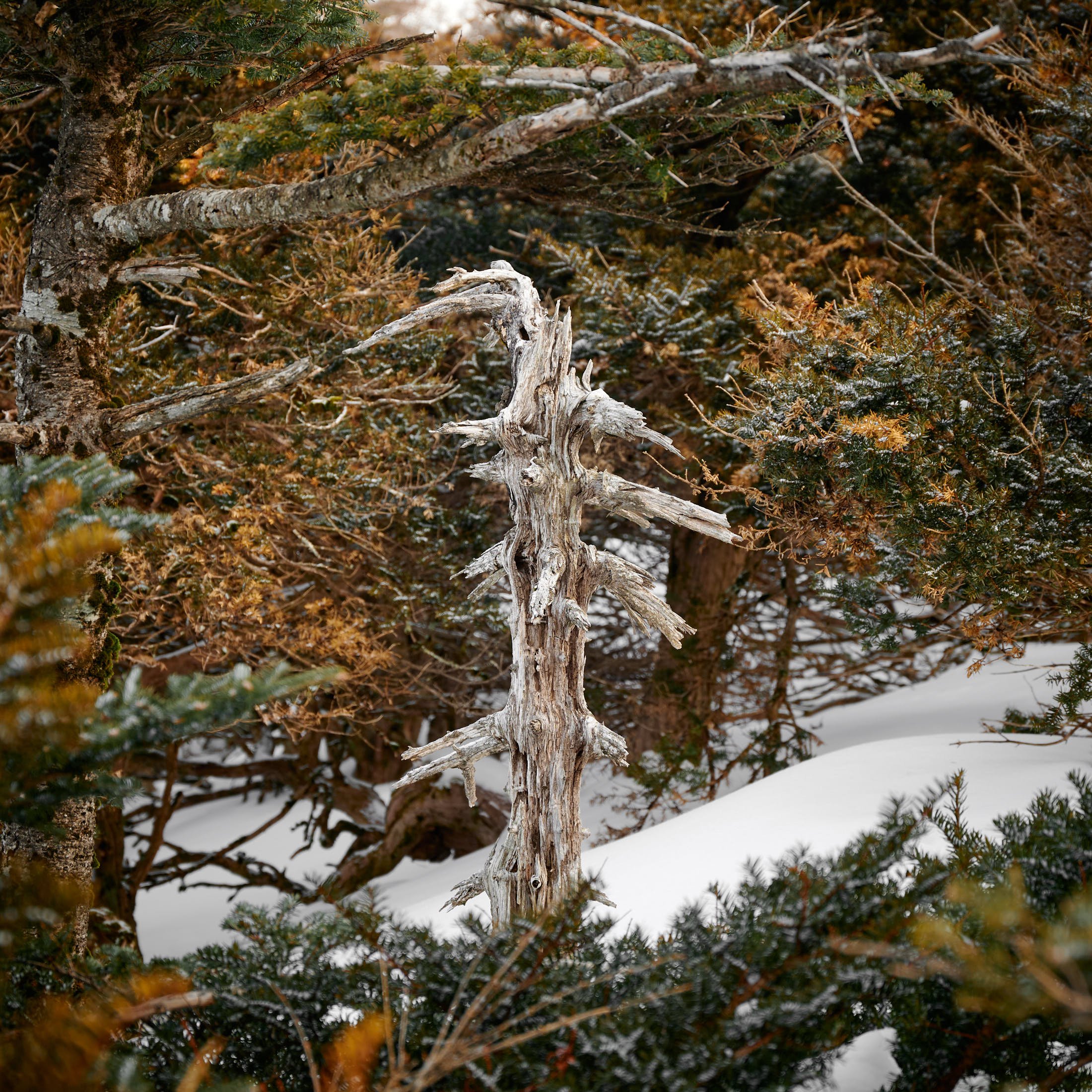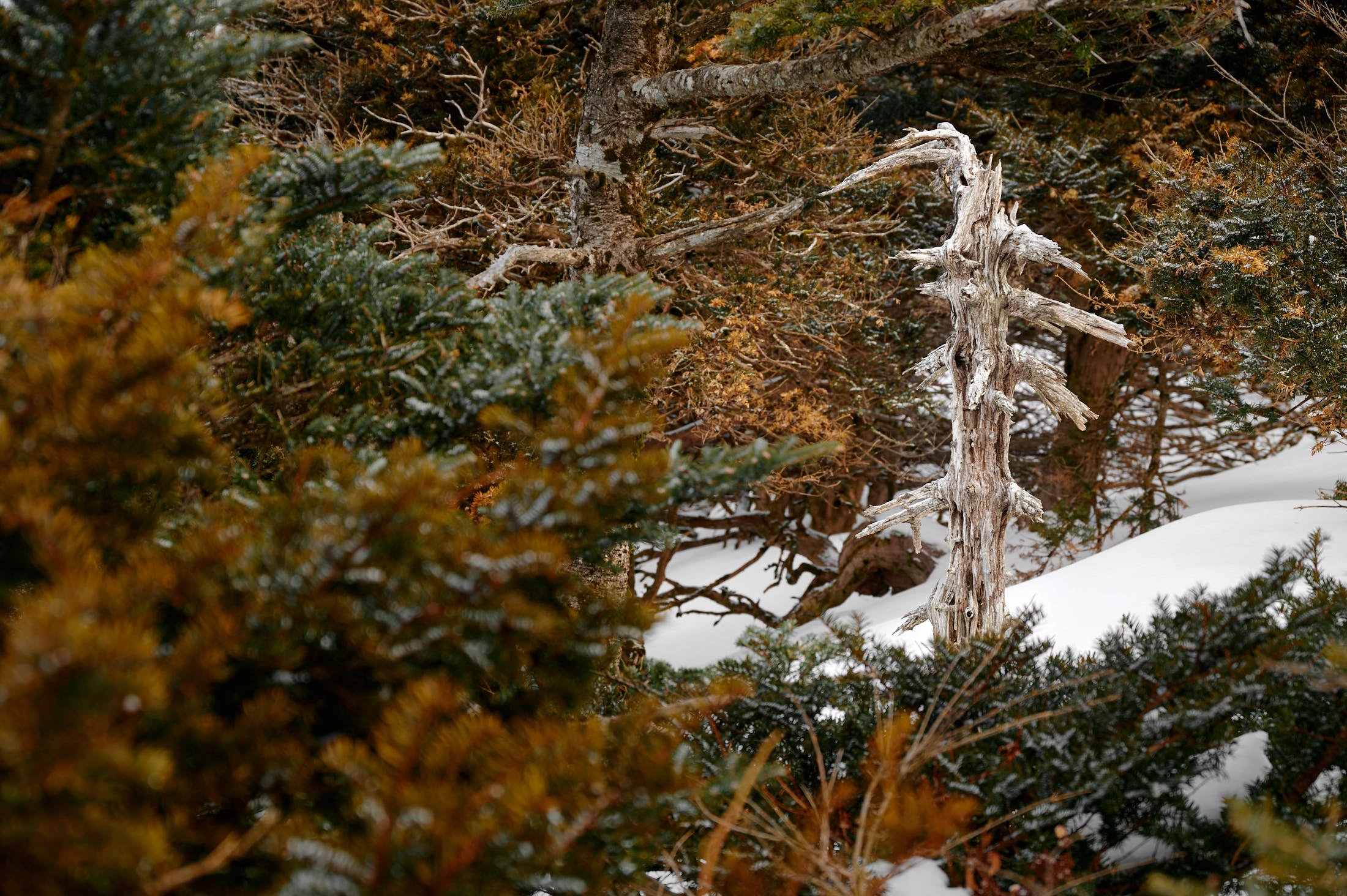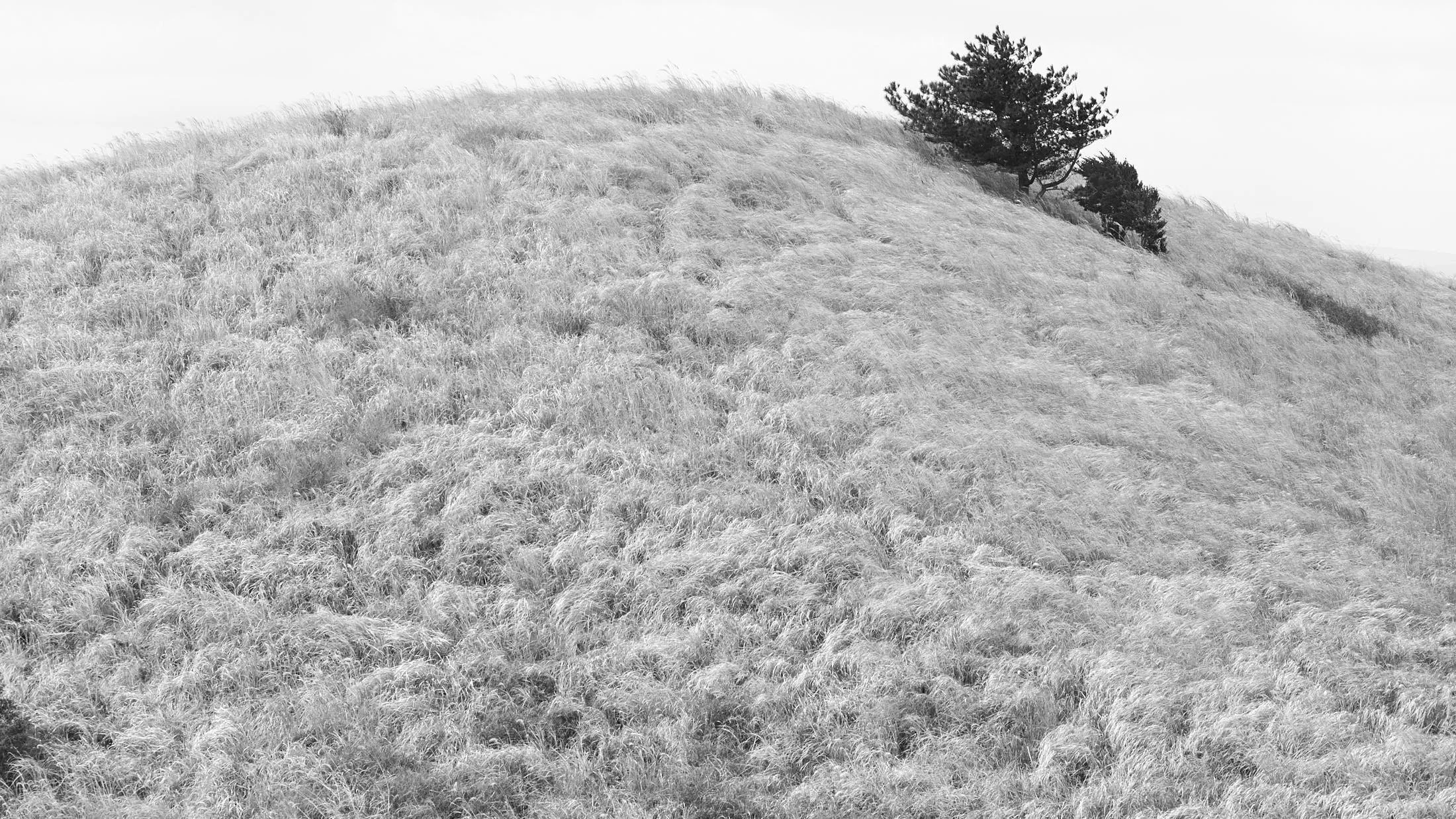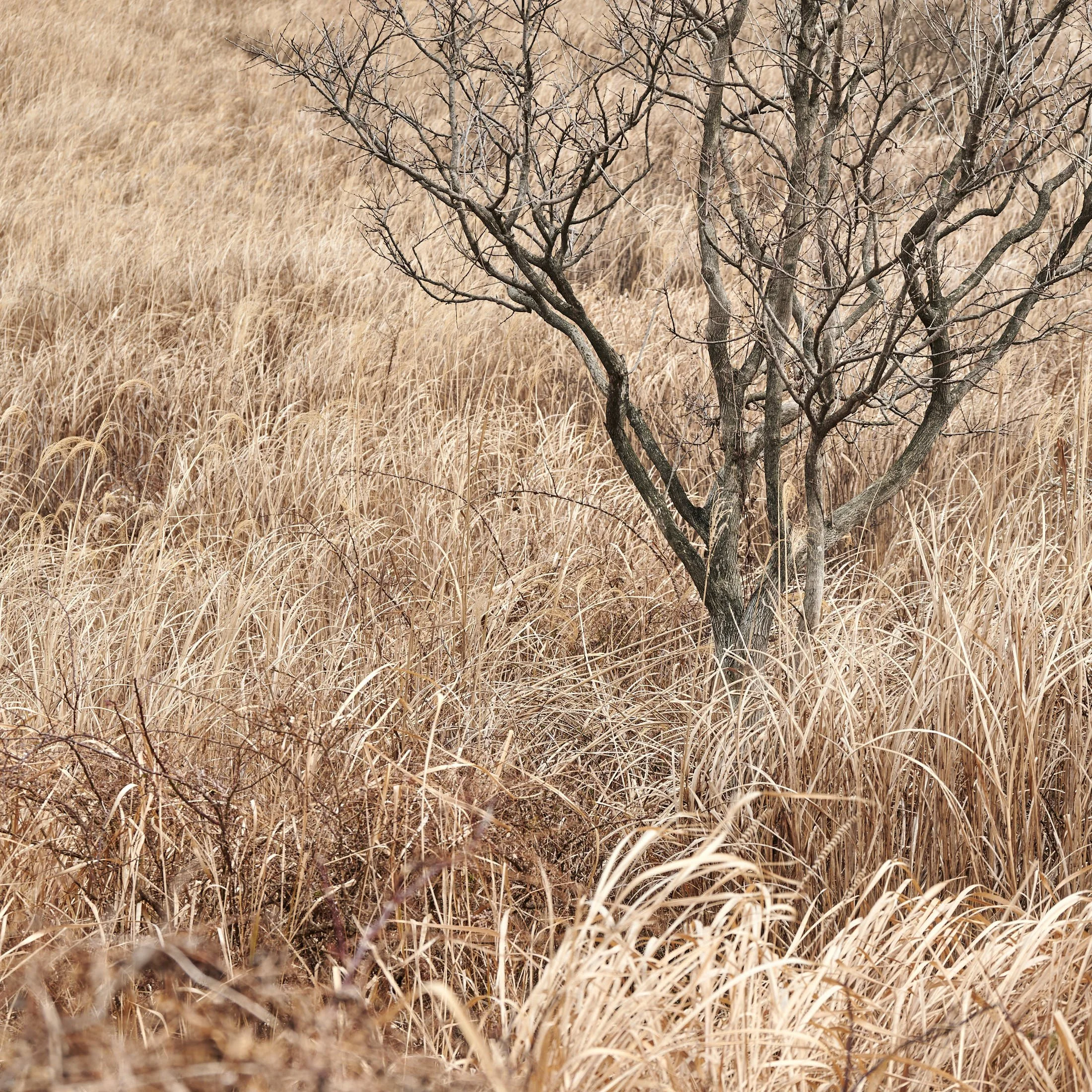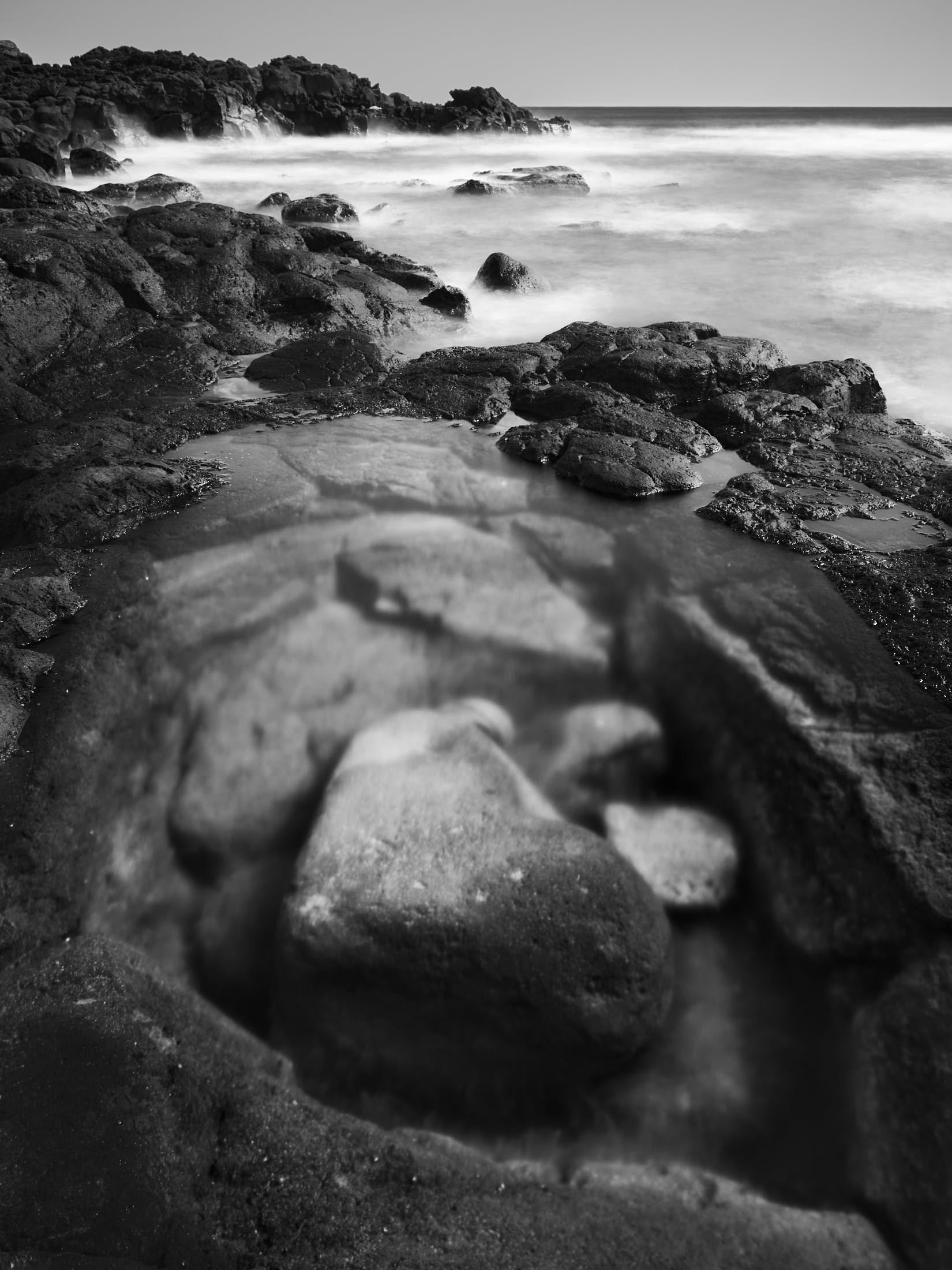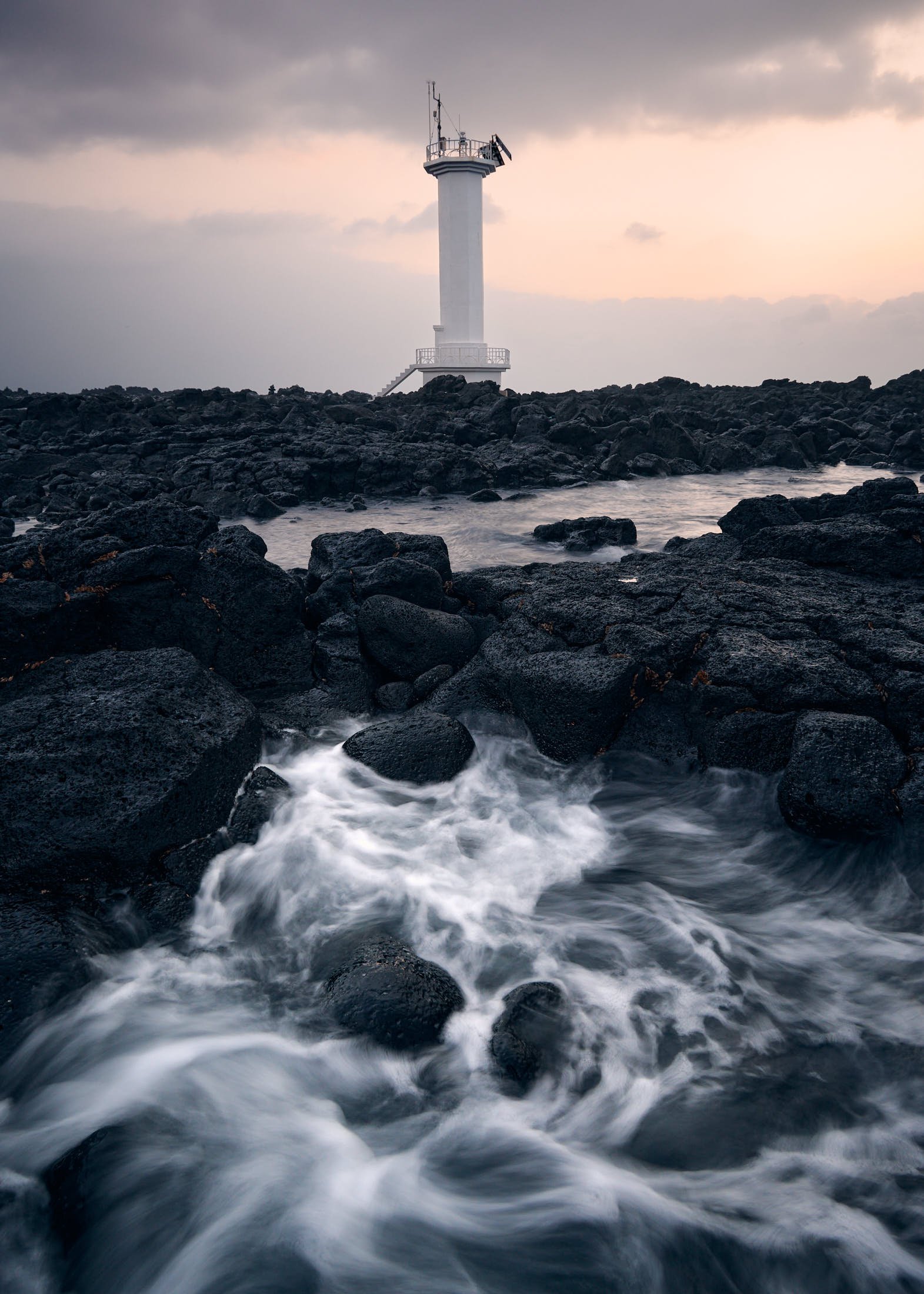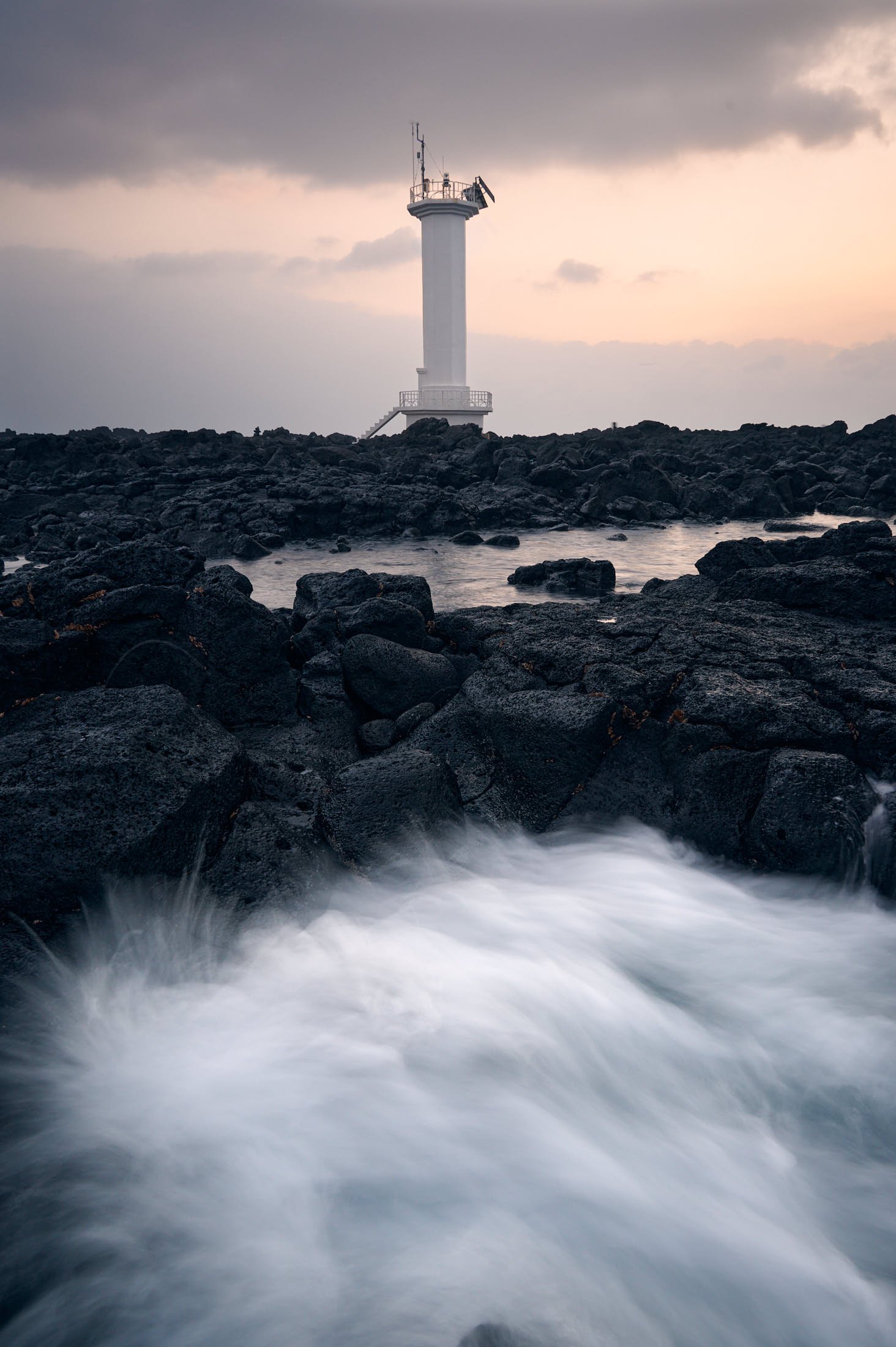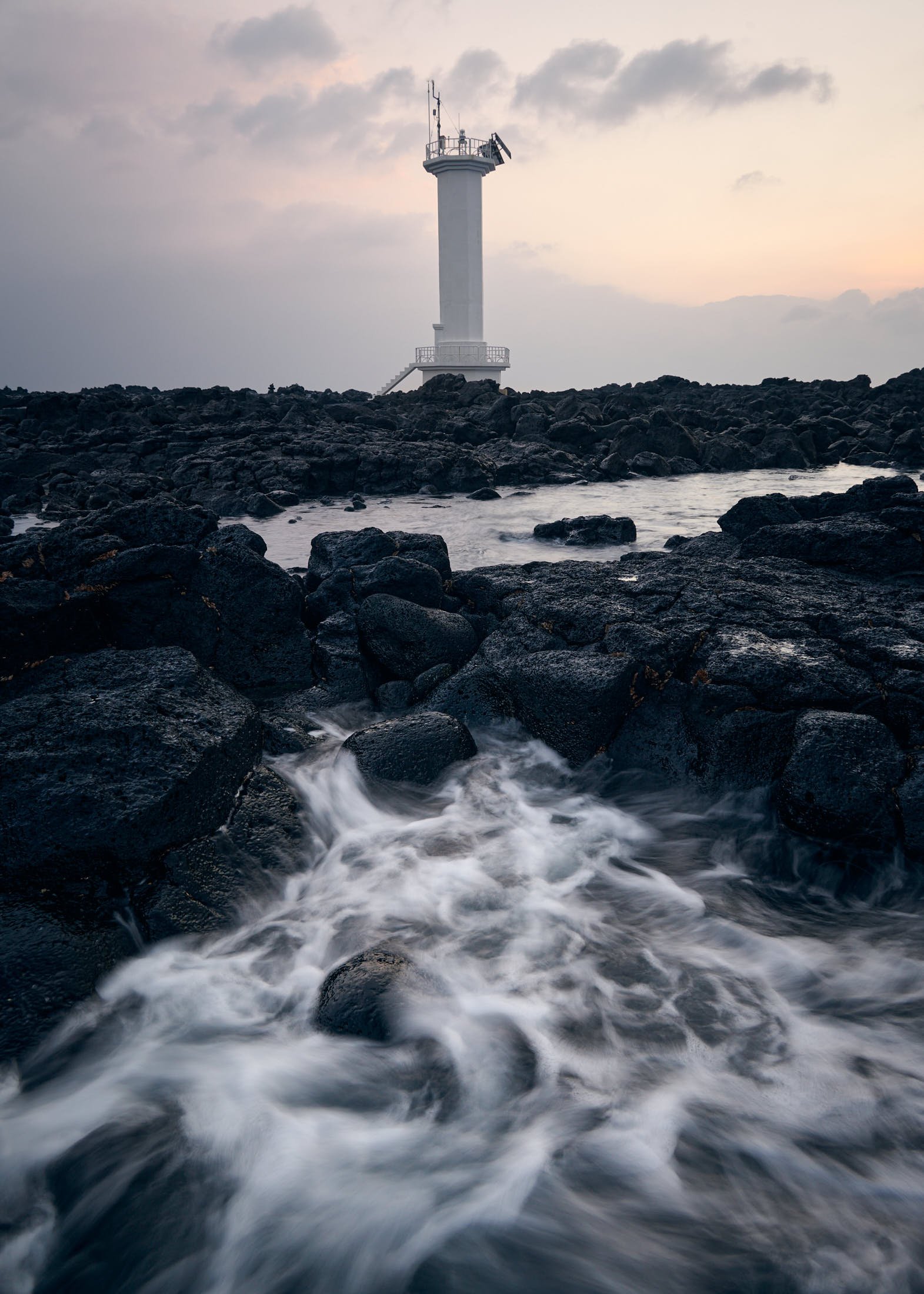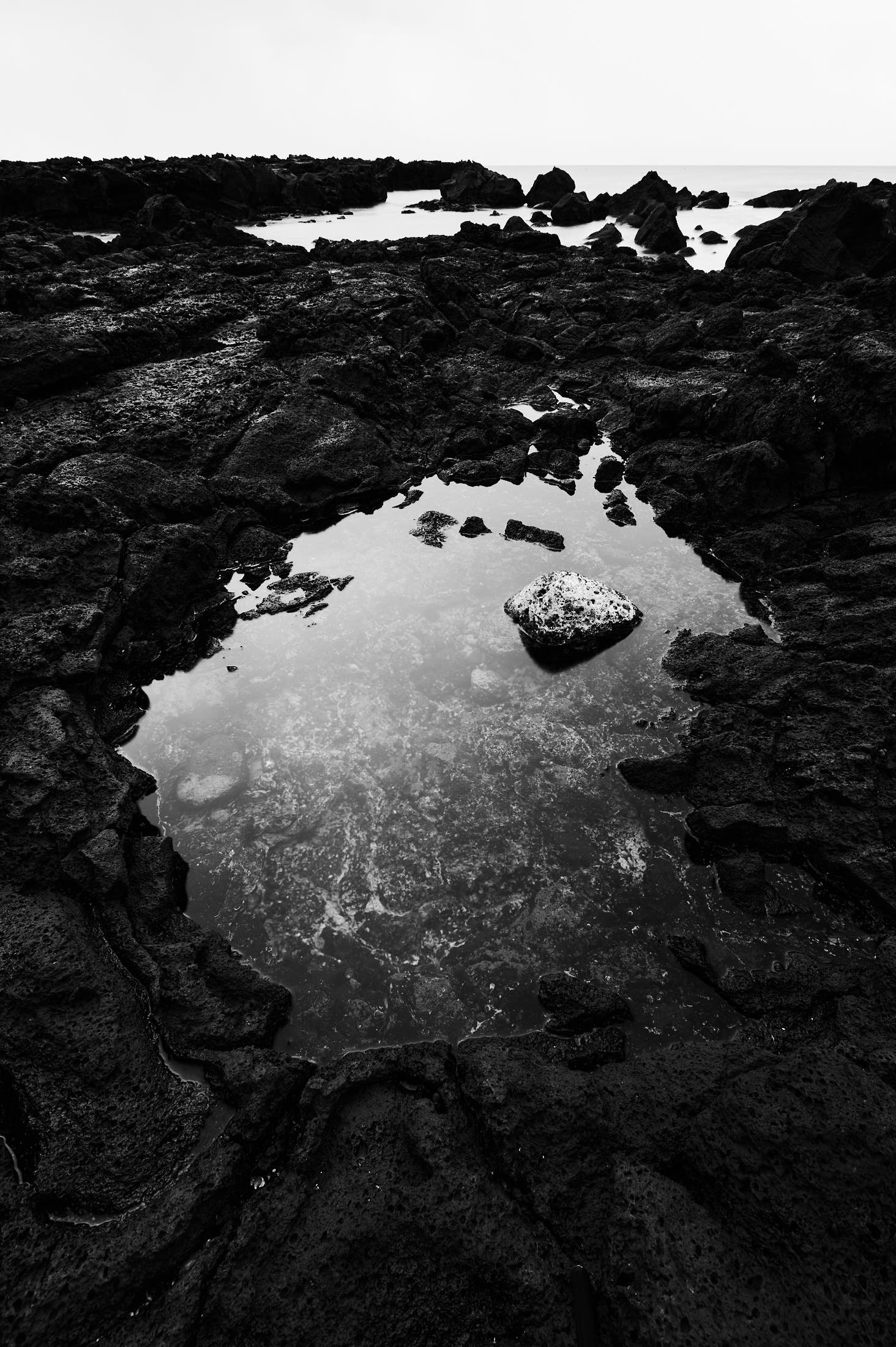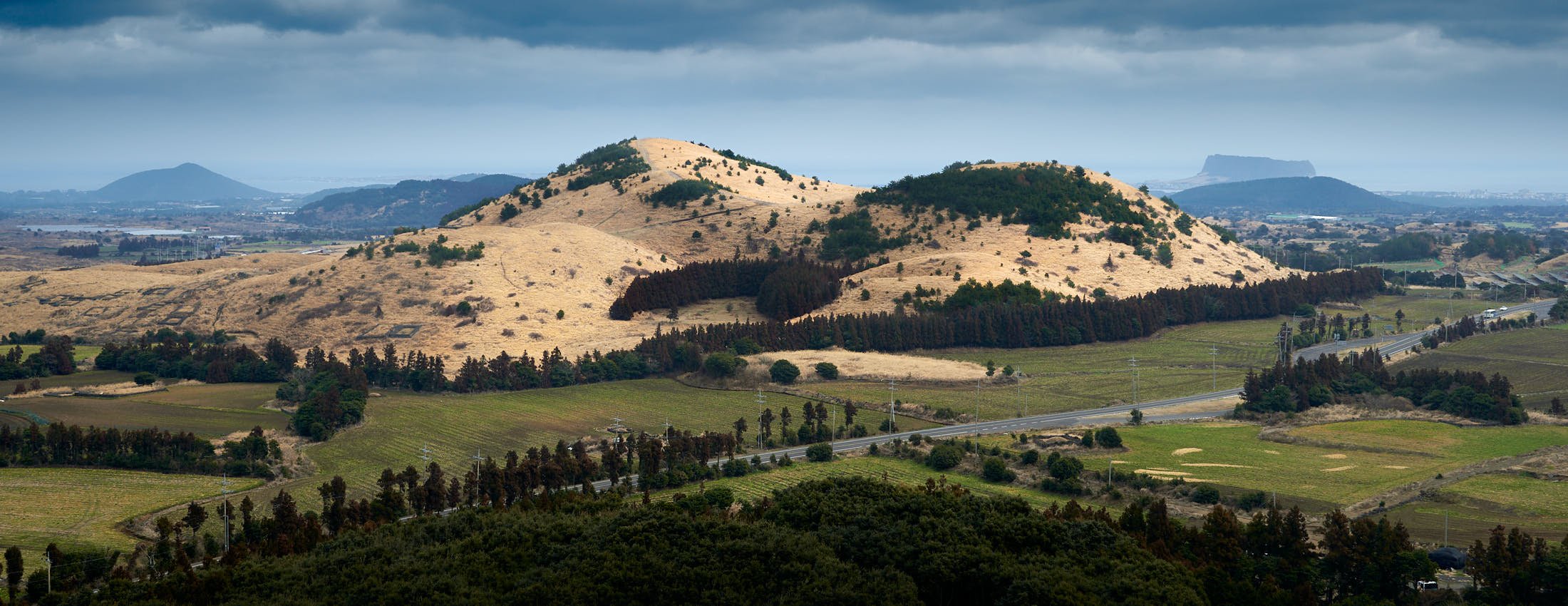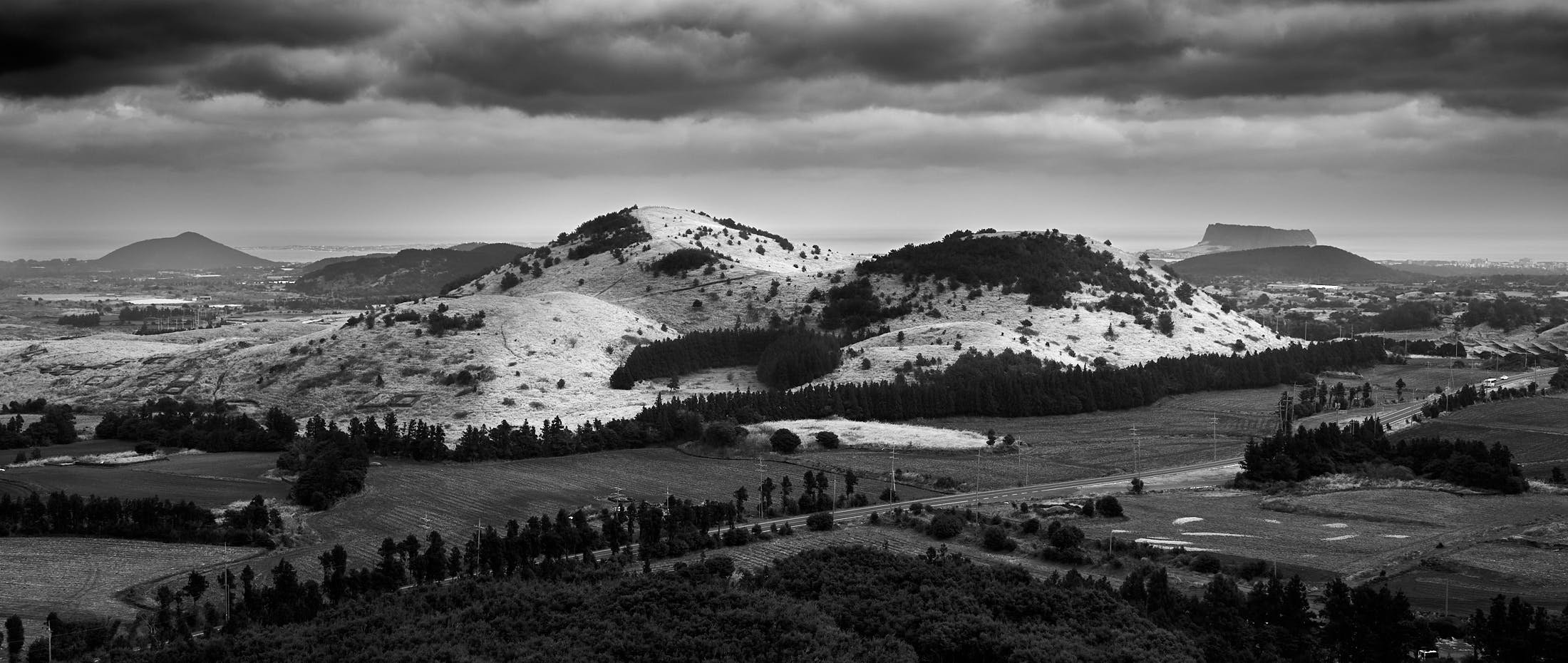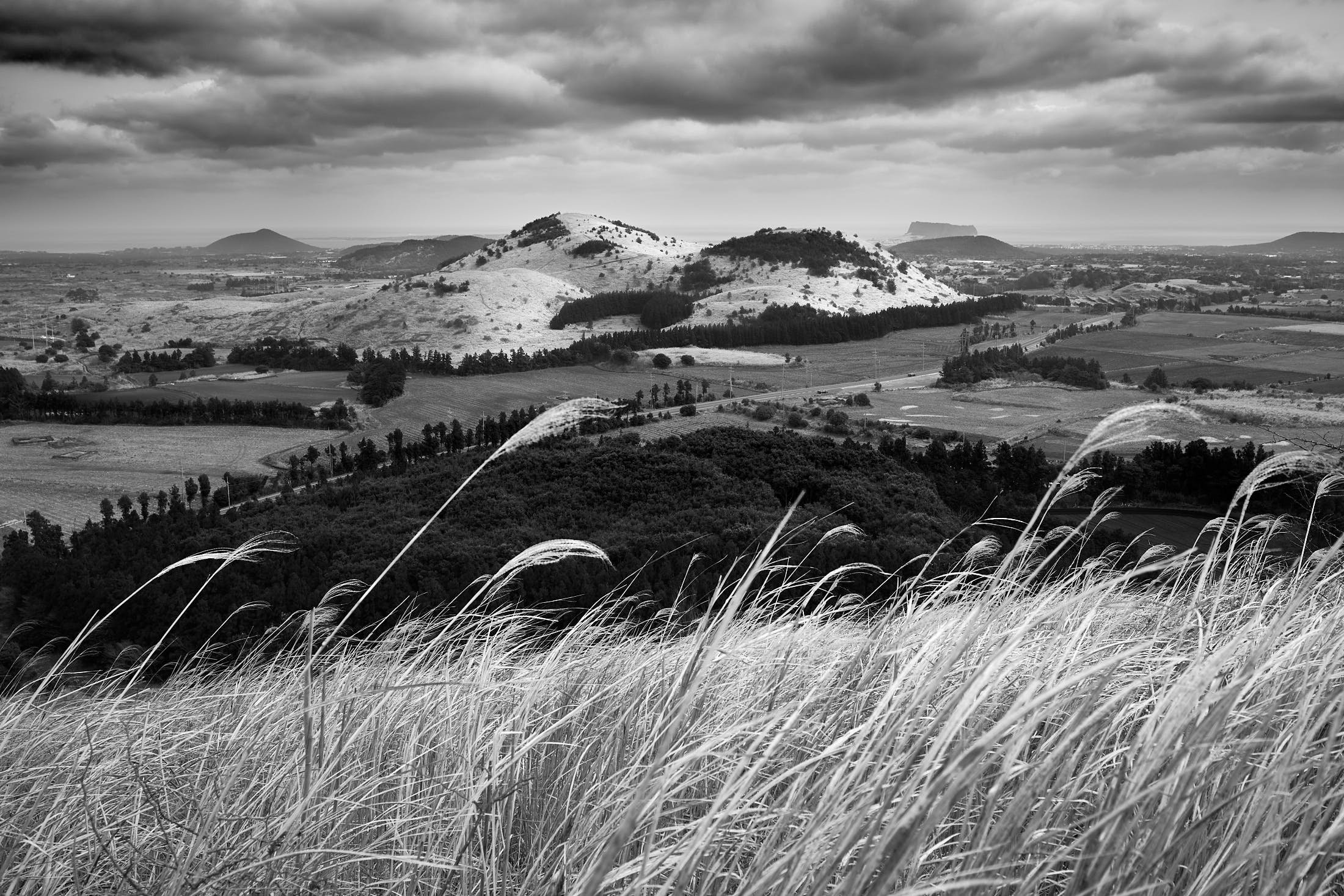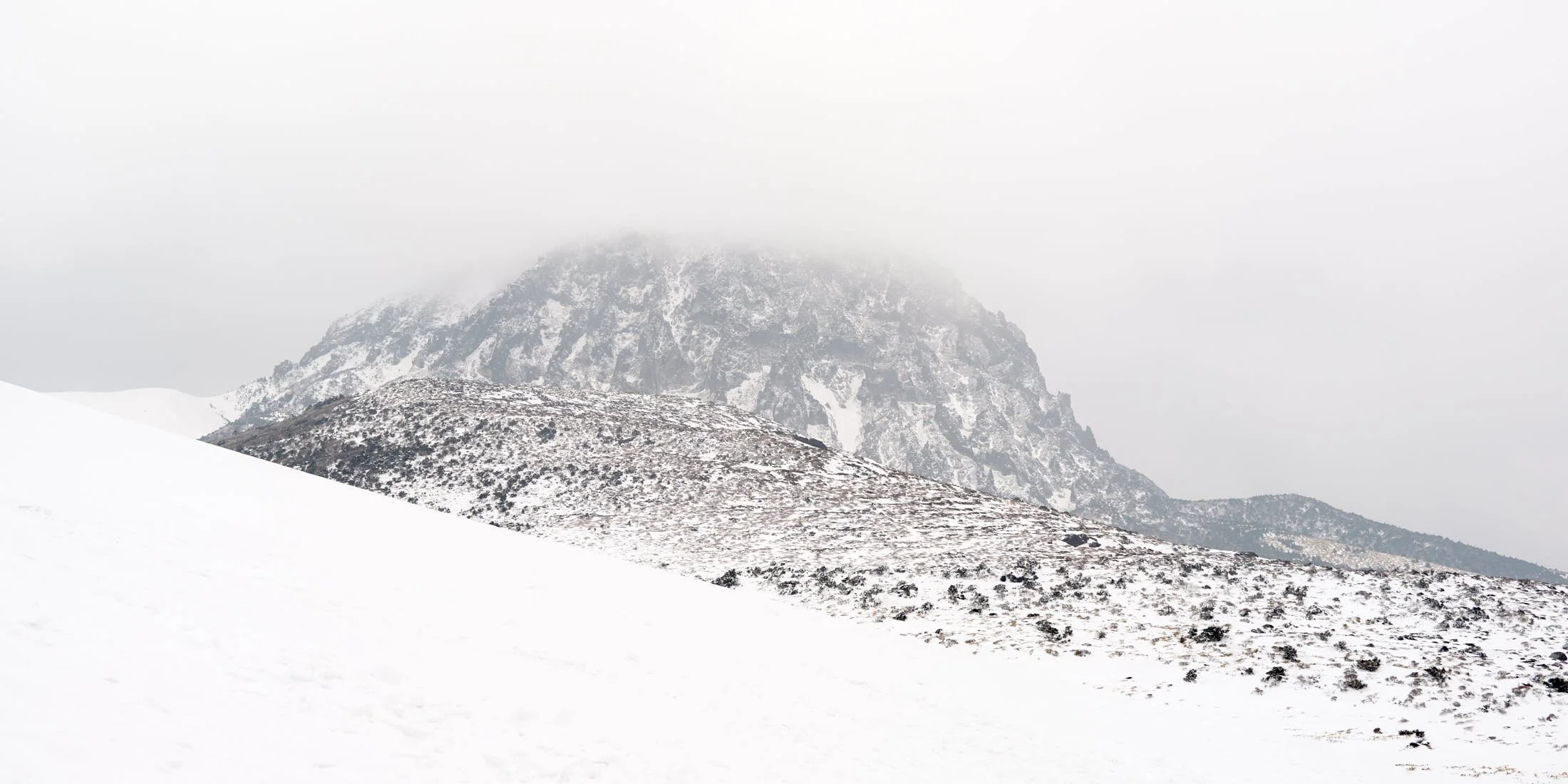Voyage to Jeju
On Jeju, there are 3 “things” you will find everywhere: wind, black rocks, and women.
It’s a local proverb that describes life on the island: incessant wind, the island was mostly formed by the towering 한라산- Hallasan volcano so rocks are exclusively volcanic, and women were traditionally found in the fields while the men were at sea (except for the legendary 해녀 - Haenyo-Sea Women, whom you would find free diving for seafood all around the island). Things have changed since that proverb was 100% accurate but, as a whole, Jeju’s beauty has remained intact and one of kind. This post is an homage to this marvelous island.
I am not much of a portrait photographer so I won’t show you Jeju women’s beauty but wind and rocks I feel more confident capturing. Let me tell you the story of what I saw and felt during a 5-day family trip on that gem of an island in February.
Part 01: The Vegetation
Jeju is a fairly small island (1,849km2 / 714mile2) so theoretically, vegetation shouldn’t be that diverse. That estimation however couldn’t be further from the truth. Thanks to Hallasan, the tall volcano that reaches for the sky at the center of the island, plant life presents several faces. High altitude, higher forests, and reed craters are the 3 environments I will show you here. Let’s go top to bottom, approaching the summit of Hallasan (a crater cone called 백록담 - Baekrokdam) you won’t fail to notice that among the thriving pines there are also a huge amount of dead trees. Whether from age, lightning, or disease I cannot explain their abundance in some areas. They are stunning, especially in the snow. However, they are also hard to shoot because, the whole volcano being a protected national park, I wasn’t free to wander around my subjects as I pleased. Nonetheless here is a strangely shaped specimen that caught my eyes.
I loved how the surrounding pines are displaying their winter colors, the brown needles feel as if brushed in by the great painter of nature. It certainly makes this intimate scene more colorful than in summer when all is green.
Above certain altitudes, pine trees vastly dominate the landscape. To find forests you have to look for them on the slopes of Hallasan. There you will encounter a wide variety of trees, bushes, and mosses. Nature quickly becomes very dense as you tread lower altitude wood paths, but some areas have been colonized by immense trees, here, cypresses. The following images are my attempt at forest photography.
While it is the heart of winter the milder temperatures here allow for green to dominate the color palette year-round. I let light direct my lens, I cannot explain my purpose other than the light I benefited from that evening was splendid, so I shot that rather than the forest itself. The place is 서귀포 치유의 숲 - Seogwipo Healing Forest. I wholeheartedly recommend the visit, you can make it a long trek if you want. Hearing the wind whistling in the high branches and seeing the light glitter on the tree bark cannot help but make me feel that is where we belong, among giants…
Much of the island is covered in very thick forests, closer to jungles even in many parts. Some areas offer a welcome respite from the density: 오름 - Oreum. It is Korean for the hundreds of crater cones that sprouted all around the island. Some are perfectly cone-shaped, some have eroded with time and eruptions, but they all have a unique character and always offer a spectacular view of their surroundings. I will save the view for part 3. Here I want to show you that some of those Oreums are covered in high reeds. They dance along with the wind, bend under its constant push, and rock back and forth, following wind gushes. In still images, they appear to form an abstract mass, as if painted by an impressionist.
My goal here is to play with shapes, breaking the simplicity of the composition with a contrasty subject. Feel free to look for details in the vegetation, but I suggest just stepping back and simply feeling the colors, the shapes, and the overall calmness of these scenes.
Part 02: The Coast
Jeju has paradisiac beaches, that’s why summertime tourism explodes every year. Though turquoise smooth waters on white-sand beaches are certainly a treat, when it comes to photography, I much prefer the rugged sharp-edged volcanic rock of the shore. There is always something to see there. Whether I find tide pools full of sea creatures or stare at ceaselessly crashing waves, I am attracted to the wilder shores and their mesmerizing cycles.
At the southernmost point of South Korea (on the tiny island of 마라도 - Marado) I discovered this big tide pool with a smooth round boulder in it. It made for a great foreground interest while, in the background, you can see the last land before the infinite ocean.
Considering how wild Jeju’s coast is, you will find numerous radio towers and lighthouses to warn boats away from the coast. I imagine it would be easy not to see those black rocks in the middle of the night. I tried my camera at one radio tower at sunrise, hoping to get some wave action, here is the result.
Timing is always the hardest part when trying to catch a wave. Get the right amount of motion blur, the right amount of foam and water, and of course get an interesting motion. It takes a good amount of attempts but these waves did compensate well for the sky’s neutrality.
It was clear I wasn’t going to get any sunrise action (the light snowfall that morning was a convincing warning sign) I chose to turn my attention to a calmer composition, sheltered from the waves. If only the sky could have some interest…
The snow clouds surprisingly did have interest! Simultaneously, the sun peered out of the cloud blanket for an instant, and the clouds got some definition. Also, I really like the leading lines created by the landscape in this image.
Here is one last tide pool to conclude the shore part. In winter there isn’t much life in those pools. It’s a shame, Jeju’s small crabs are quite cute! Instead, I’ll focus on the rocks, one in particular. It stands inside a shallow pool and has a white cap that differentiates it from virtually all the others in the vicinity. I’m not certain what the white coat is… salt maybe?
I tried different rotation settings on my polarizer filter to try and lead your eyes to the white-capped stone. In the black & white version, I opted for a less polarized image, hoping that the shadow underneath the stone would be enough to make it remarkable. In the color version, I dimmed the water reflection as much as possible to contrast the colorless rocks and the colorful pool floor. Let me know which one works better for you!
Part 03: The Vista
While Jeju undoubtedly has inspiring beauty in its details, it is not short at all of grand vistas. With officially 368 오름 - Oreums (crater cones) scattered all around the island, you can easily imagine that viewpoints are not a lacking feature here. Quite the opposite. They are my favorite hikes: short, intense ascent at times but always incredibly rewarding. Let me show you the ones I visited during this trip.
This is part of the view from the cliffs of 마라도 - Marado (the tiny island with the southernmost point). It’s more of a traveling photo, far from what I usually do. I placed it here to show you the amount of Oreums there are on the main island. In this very small portion of land, you can already see a lot of them. You can also see, standing high above the horizon on the right, my favorite Jeju mountain, called 산방산 - Sanbangsan. I have yet to hike it but I know deep inside my heart that it would be a fantastic hike.
Last picture of the coast. I took it from a low crater cone called 제지기오름 - Jejigi Oreum (92.1m - 302.17 feet only). The place itself isn’t particularly remarkable but it offers a gorgeous window to the shore and the island of 섶섬 - Seop Island where many go scuba diving in the summer. I was about to give up on photography that evening when my wife spotted this amazing postcard composition through the pines. For sure she has the eye, I thank her for being with me that evening!
One more Oreum called 손지오름 - Sonji Oreum (255,8m - 839.24 feet), on the very scenic east side of Jeju. It’s the one covered in high reeds, you have seen those above. It’s mostly all reeds on a 45-degree slope and a handful of trees scattered here and there. The 360 panorama from here is breathtaking and so beyond complicated to render in one image. I chose to focus on only two aspects of it.
This image I dedicated to wind: the galloping clouds, the wind tilted tree and reeds, and in the background the wind turbines. Wind, one of the three “things” you’ll find everywhere in Jeju.
The next set of images are taken from that same crater cone and are intended to be an homage to a local photographer called 김영갑 - Kim Young Gap who spend much of his life capturing the beauty of Oreums. I was very impressed and inspired by the way he shot wind in his photography by playing with shutter speeds and composition. Using film for this, and achieving such powerful and harmonious results is such a vibrant success. I cannot help but reach for my memory of his work while in nature to guide my hand. If you ever find yourself in Jeju, and want to know more about his work, make sure to visit his gallery, which was his house, transformed into a museum. Highly recommended to all landscape photography lovers!
At Kim Young Gap’s gallery, there was a number of images of a crater I had not explored yet called 용눈이오름 - Yongnuni Oreum. It has quite an interesting shape so I put it on my list of must-see craters.
I understand now why 김영갑 - Kim Young Gap seemed to like it so much! Its triple cone shape and position in the landscape from here could not be better. It is both so strong and yet so harmonious in its surroundings. Also, in my extreme good luck, the yellow winter grass contrasts so nicely with the hazy blue sky. Last noteworthy detail, for those who know Jeju, you can see 성산일출봉 - Seongsan Sunrise Peak on the back right, it is one of the must go to places for any visitor of the island, especially, as you guessed it, for sunrise gazing.
Here is my homage to Kim Young Gap, I included the reeds in the foreground to try and give you a sense of the unfolding dynamic atmosphere. I also enjoy how the foreground color answers the Oreum’s color. Nonetheless, my preference goes to the black and white version because the stormy-looking clouds create a more turbulent feeling that the wind in the foreground echoes.
There is one final crater cone that I had to include here. The very top of the island, the one point that culminates over all the others (even in the mainland): 백록담 - Baekrokdam 1950m - 6397.6 feet. It is the summit of 한라산 - Hallasan, the mighty volcano that divides not just the administrative areas and the landscape but also the weather between north and south. Due to its height, you may find very pleasant weather in the south, rain in the north, and snowstorm at the top. It is a mighty beast of nature, alone in the ocean, bending the winds to its will. Here it is, draped in its winter blanket of snow.
My goal here was to be simple, to let you decide where is up and where is down. It’s an image for snow lovers and those of us who find peace in the white winter.
A quick map of the island so you can get a better idea of where the images where taken.
Thank you ever so much for reading about this winter photographic trip to Jeju. I did my best to show you what makes Jeju such a special place. I hope I have convinced you to visit in the future. If you want to see images of my previous Jeju trips follow me on instagram @romainphoto_outside or facebook.
Feel free to leave your impression on my work in the comments section below or hiking/photography suggestions and share my blog so that, one day maybe, I can meet you on a hike!
A bientôt!

